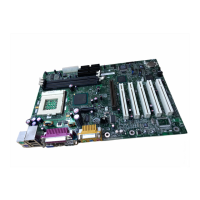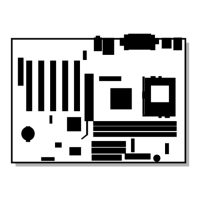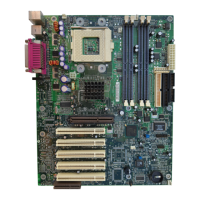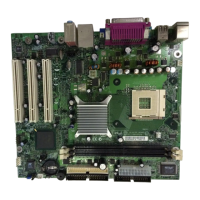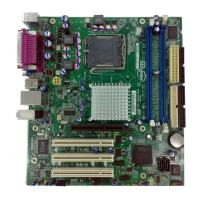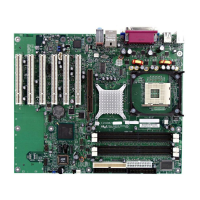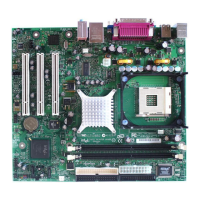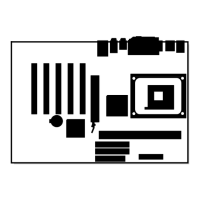BIOS Setup Program
131
4.7.1 Boot Device Priority Submenu
To access this menu, select Boot on the menu bar, then Boot Devices Priority.
Maintenance Main Advanced Security Power
Boot
Exit
Boot Device Priority
Hard Disk Drives
Removeable Devices
ATAPI CDROM Drives
The submenu represented in Table 80 is for setting boot devices priority.
Table 80. Boot Device Priority Submenu
Feature Options Description
1
st
Boot Device
2
nd
Boot Device
3
rd
Boot Device
4
th
Boot Device
(Note 1)
• Removable Dev.
• Hard Drive
• ATAPI CD-ROM
• Intel UNDI, PXE
• Disabled
Specifies the boot sequence from the available types of
boot devices. To specify boot sequence:
1. Select the boot device with <↑> or <↓>.
2. Press <Enter> to set the selection as the intended
boot device.
The operating system assigns a drive letter to each boot
device in the order listed. Changing the order of the
devices changes the drive lettering. The default settings
for the first through final boot devices are, respectively,
listed below. The BIOS supports up to sixteen total boot
devices in any combination of the boot device types
below, with respect to these maximums per type.
• Removable Dev. (maximum of four)
• Hard Drive (maximum of twelve)
• ATAPI CD-ROM (maximum of four)
• Intel
®
UNDI, PXE (maximum of five)
(Note 2)
The boot devices appear in order by type. For example,
assume that the default boot order is preserved and that
seven boot devices of the following types are installed on
the system: two removable devices, two hard drives, two
ATAPI CD-ROMs, and an Intel UNDI (Universal Network
Device Interface), PXE device. Both removable devices
would appear as the first and second boot devices, the
two hard drives would appear as the third and fourth, the
two ATAPI CD-ROM drives would appear as the fifth and
sixth, and the Intel UNDI, PXE device would appear as
the seventh boot device.
Notes:
1. After the predefined boot device types (removable devices, hard drives, and ATAPI CD-ROM drives), the entries in this
list will reflect as many boot entry vector (BEV) boot devices (for example, Intel UNDI, PXE devices) and SCSI
CD-ROM drives as are installed, up to the five BEV boot devices supported by the BIOS.
2. While the predefined boot device types are listed individually in submenus by type, the BEV devices and SCSI
CD-ROM drives are all listed at this level.
